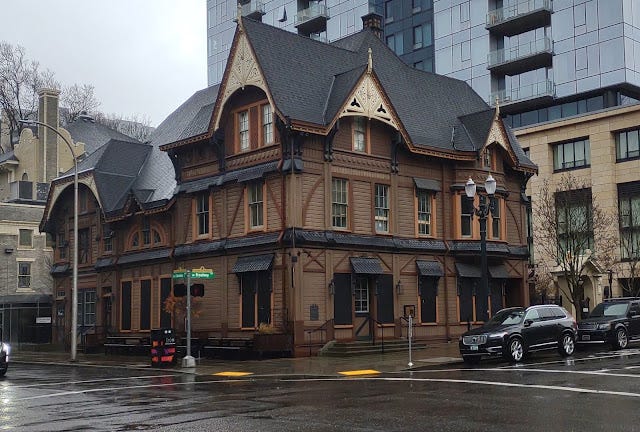Whither downtown Portland
Experts say each city must find its own solutions
Like other urban centers, downtown Portland suffers today from vacant storefronts, vacant offices and boarded-up windows. Starting in 2020, the COVID pandemic changed office practices and heavily crippled traditional downtown retail and nightlife.
Urbanists realize that major downtowns will not recover to being their former selves. So, what are the options for improvement? A Portland City Club panel with experts from San Francisco and Denver said cities’ priorities are largely similar: clean, safe streets; nighttime and cultural activities; mixed uses with more housing; activated public spaces and pedestrian-friendly streets.
But they agreed every city has to find its own solutions; what works in one city might not in another.
Sarah Dennis-Phillips, director of economic and workforce development in San Francisco, offered a few interesting possibilities that Portland might consider. She said a change in law allows bars to provide sidewalk drinking spaces which are proving popular. She also said the city is working with landlords who are willing to offer up to six months of free ground-floor rent for new commercial businesses.
While concerts and cultural events can draw people downtown, Dennis-Phillips said cultural institutions themselves are facing financial challenges, presumably stemming from the Trump Administration and many unrelated individual factors.
“We have a good sense of what works and what people want,” she said. But she said a key factor is figuring out how to maintain amenities without requiring on-going subsidies.
Like many cities, Portland’s downtown suffers from an office vacancy rate of about 30 percent. Many of those offices will not be refilled, given the popularity of working from home learned during the pandemic. Since 2022, Dennis-Phillips said, “The world has changed for good.” While converting offices to housing is often suggested, she said realistic opportunities have proven rare.
Portland’s interesting supply of historic buildings potentially should assist in revitalizing downtown. The most obvious candidate is the shuttered Ladd Carriage house, which offers a turn-key opportunity for reopening an attractive fully equipped bar and restaurant.
More problematic is the old Multnomah County Courthouse, once approved for being converted to office spaces and public events, and the magnificent Roman-style temple that once housed U.S. National Bank. Someday, one assumes that creative thinkers will find attractive uses for these engaging buildings that will help reenergize downtown Portland.
Join Building on History’s email list by writing “add me” to faroverpar463@gmail.com





Good article, but I was surprised that there was virtually nothing said about the huge problem of the homeless and blatant drug use. I have a friend whose office moved out of the Big Pink. When I asked her about the new facilities, she said it was great not having to step over needles to go to work.
The city can come back as soon as people believe that the city is safe, civil, and beautiful.